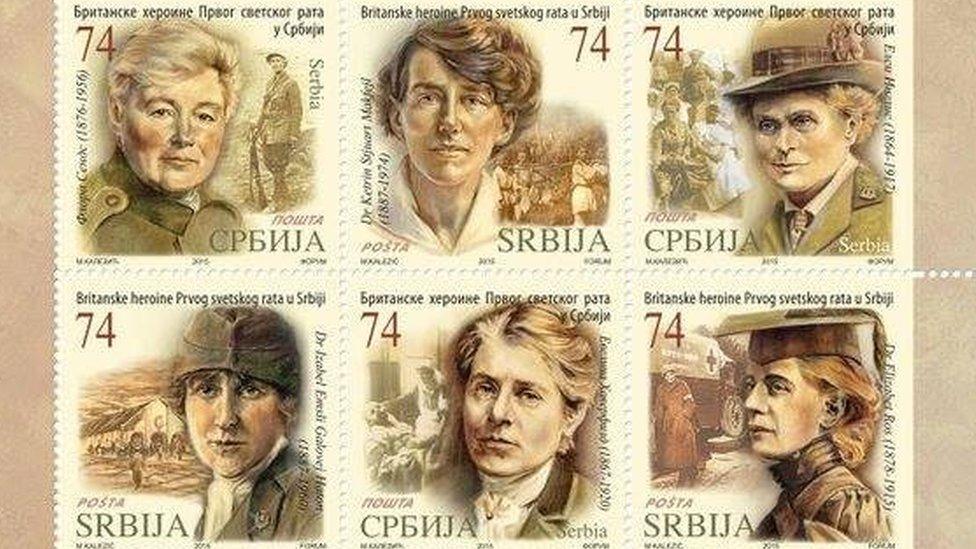WW1 women medics remembered in new Edinburgh exhibition
- Published
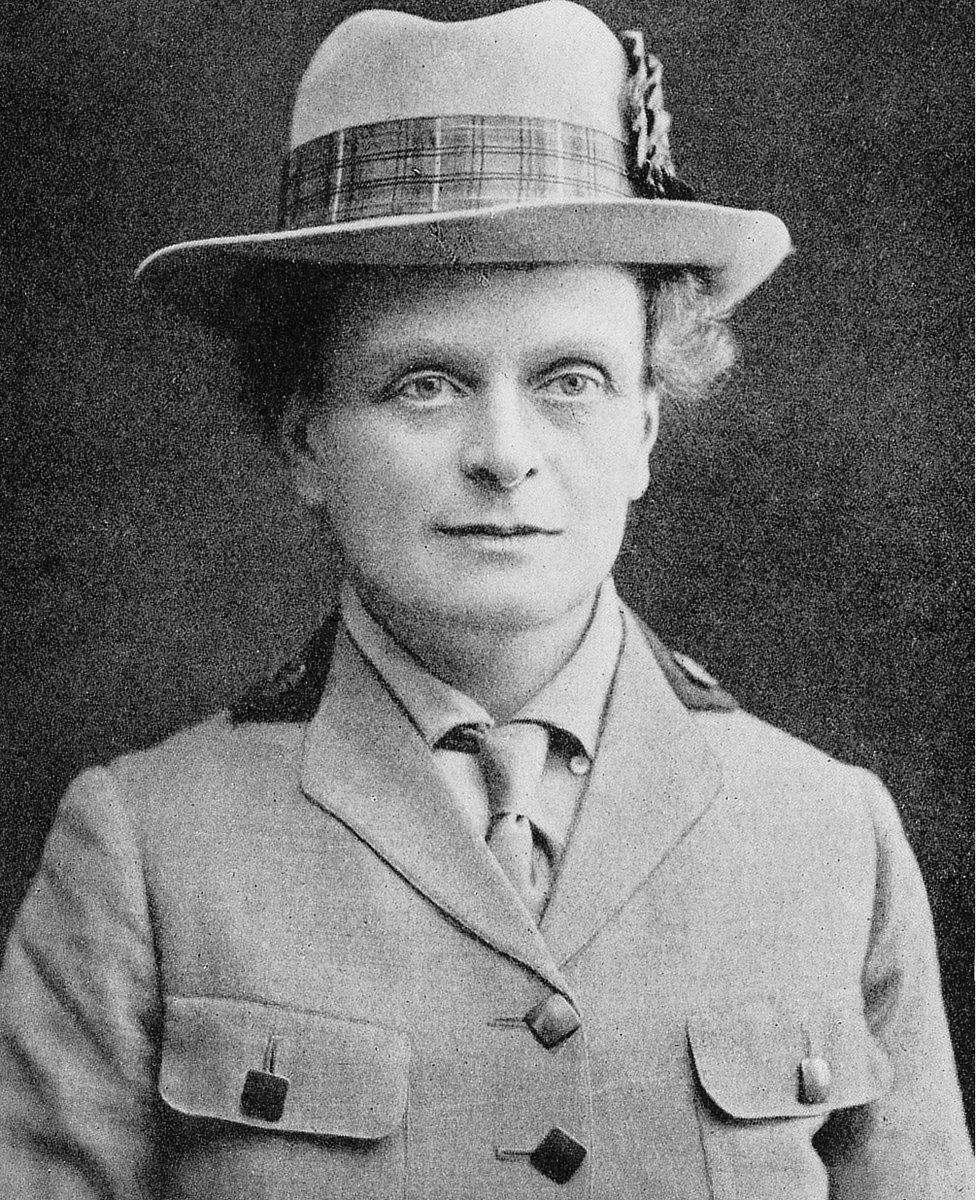
Elsie Inglis established Scottish Women's Hospitals in Edinburgh in 1914
A group of pioneering women medics who braved war zones to tend wounded soldiers are to be remembered in a new exhibition.
During World War One more than 1,500 women worked at 14 Scottish Women's Hospitals on the European front line.
They worked in dire conditions to treat hundreds of thousands of injured men during the bloody conflict.
Almost 100 years later, their work provided inspiration for the renowned Scottish artist John Bellany in the years shortly before his death in 2013.
Now some of his final artworks, which explore the impact of the hospitals on the war, will form part of an exhibition in the Scottish Parliament, external.
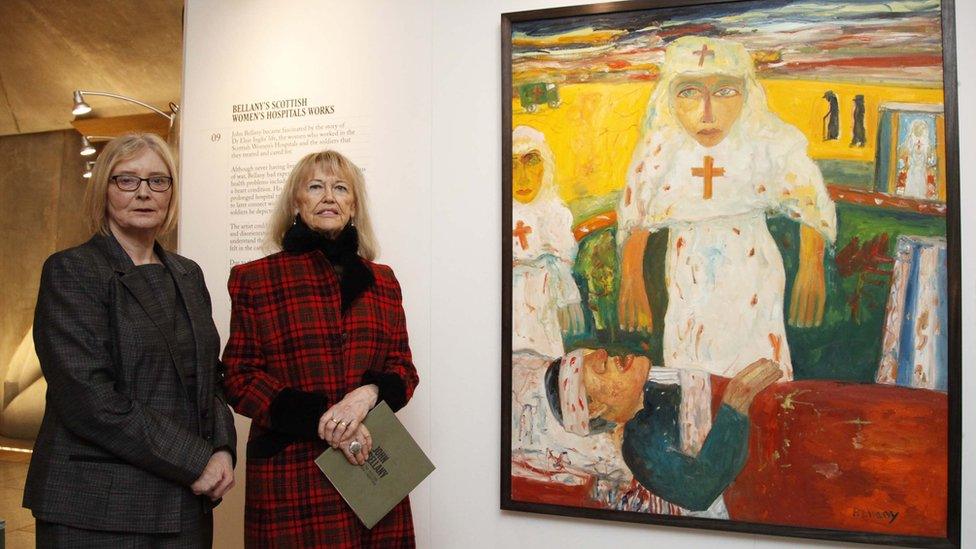
Previously unseen artwork by John Bellany will be showcased in a new exhibition
The hospitals were set up by Elsie Inglis, a doctor from Edinburgh who was a leading member of the women's suffrage movement.
She originally hoped to set up a hospital in the UK - but that plan was quickly scuppered when she took her proposal to the War Office in Edinburgh.
"My good lady, go home and sit still," she was told. Dr Inglis did exactly the opposite.
She offered the services of a team of female nurses, doctors, orderlies and drivers overseas and it was quickly accepted by countries in the grip of war.
Within months they had set up a hospital in the north of France and with funds raised from suffrage societies at home, more hospitals were set up close to battlefields across Europe including, in particular, Serbia.
Writer and researcher Louise Miller said the Balkan country was devastated by the war when, as well as being invaded, it was gripped by a typhus epidemic. In total, it lost about 16% of its population.
"Serbs needed any competent help they could get. They didn't care about the form it took: male, female, young, old - anybody," she said.
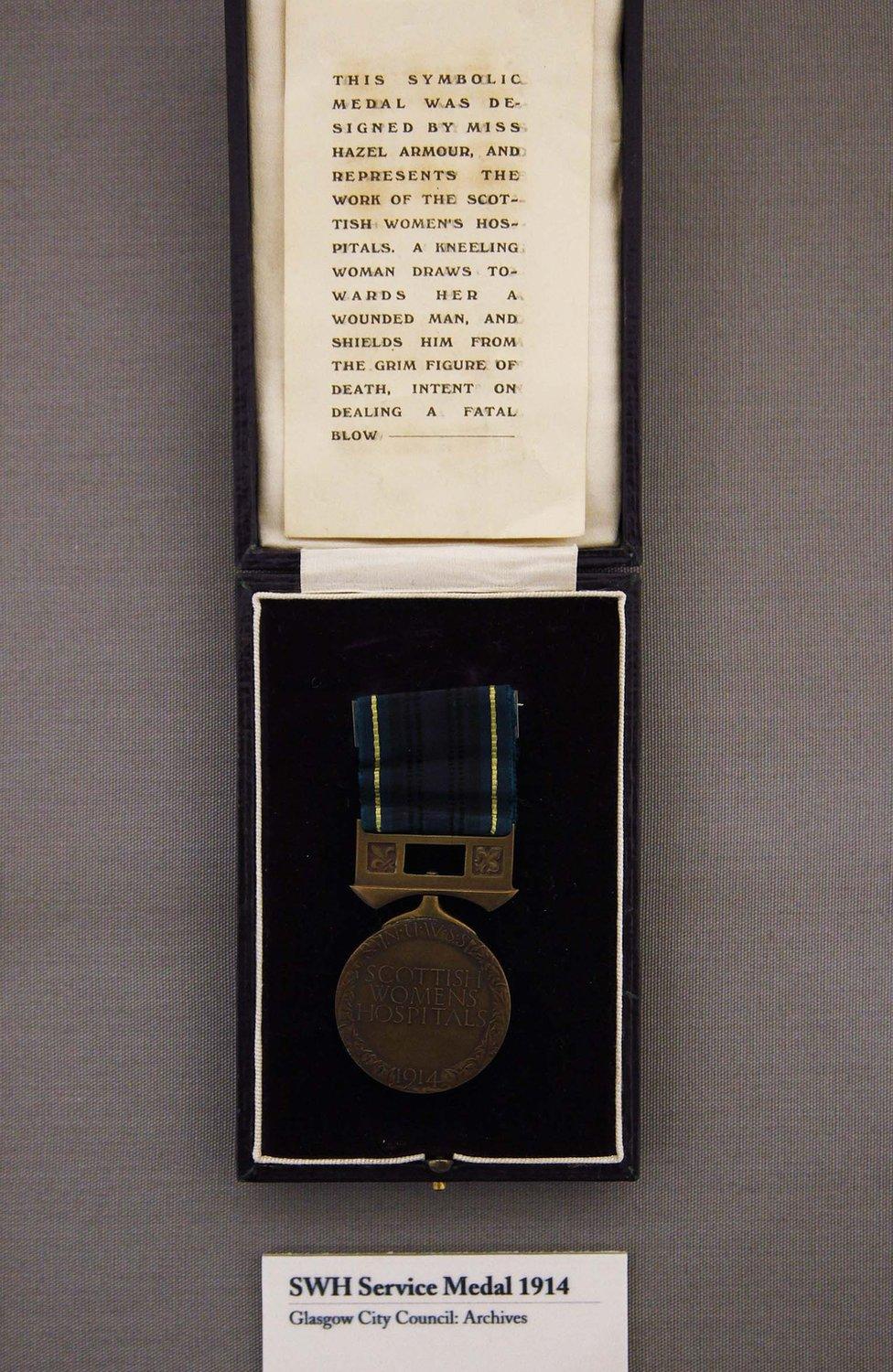
Historic artefacts from Glasgow City Council's archives are also on display
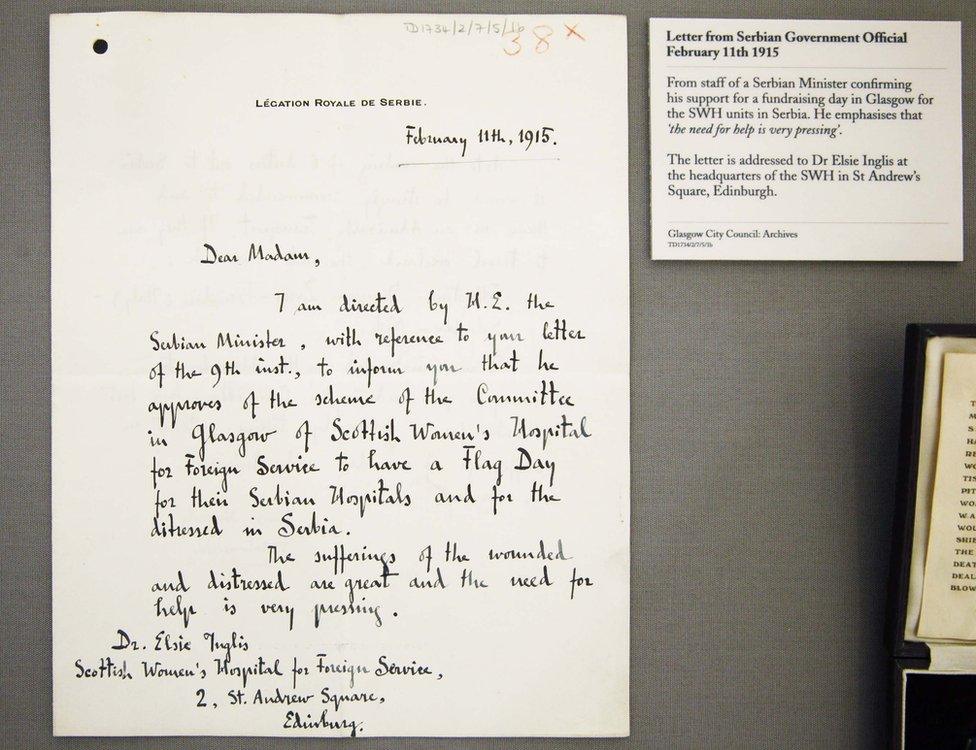
Dr Elsie Inglis was told that the need for help in Serbia was "very pressing"
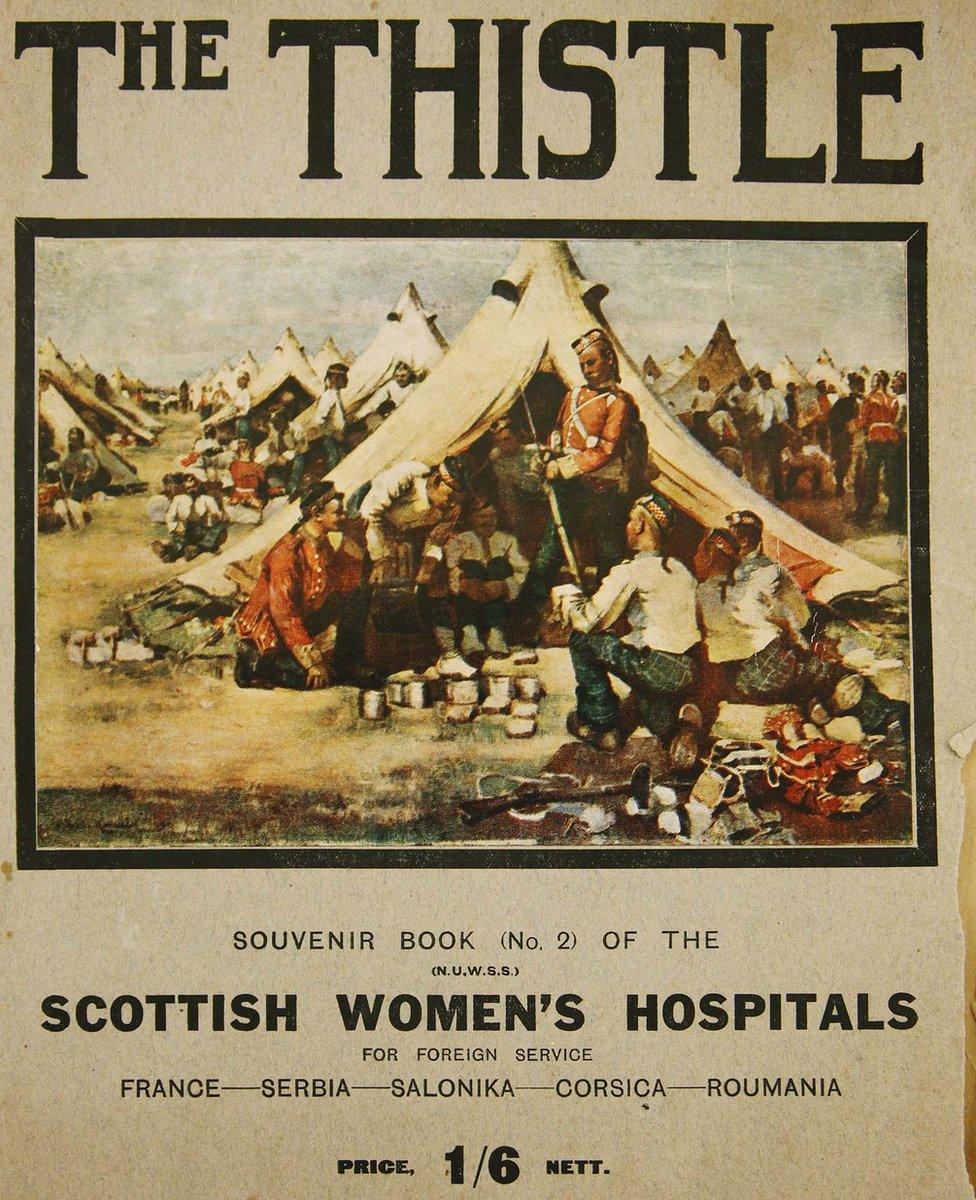
Booklets compiled by British suffrage groups raised money for Scottish Women's Hospitals
In these front line hospitals, the all-female medical teams carried out surgery on wounds and cared for the sick - but they also had an impact on morale, according to Ms Miller.
"The Serbs felt they were always there to protect them," she said. "And 100 years later the Serbs have continued to commemorate these women.
"Buildings and streets are named after them and last month there was a series of six stamps released showing women from the Scottish Women's Hospitals."
At first the hospitals drew recruits mainly from Scotland but later it attracted skilled medics from as far afield as New Zealand, Australia and Canada.
Many were volunteers who came from wealthy - even society - backgrounds.
Often unmarried and without children, they were independently-minded women determined to prove they could contribute to the war effort.

Madge Neill Fraser
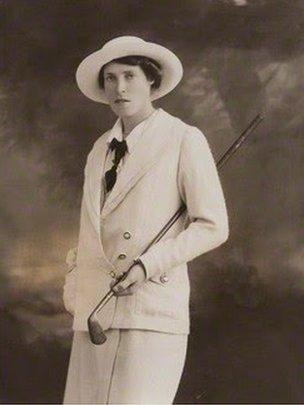
Margaret "Madge" Neill Fraser, from Edinburgh, was the captain of the Scottish Ladies Golf team when she joined the Scottish Women's Hospitals as a nurse in December 1914.
She was part of a unit which worked at a hospital at Kragujevac, a key military point near Belgrade.
It was expecting to deal with 100 patients but numbers quickly swelled to 650. The unit treated broken limbs, gangrene, frostbite, open infected wounds and by February was in the grip of an epidemic of typhus.
Shortly afterwards Madge herself contracted the disease. She died on 8 March 1915.
Evelina Haverfield

Evelina Haverfield, who was born at Inverlochy Castle in the Highlands, was one of the most famous of the hospitals' volunteers.
The daughter of the third Baron Abinger, William Frederick Scarlett, she was a seasoned and well-known campaigner for women's rights.
She went to Serbia with the Scottish Women's Hospitals in 1915 as an administrator.
During her time with the movement, she was taken prisoner by Austrian forces and repatriated to the UK.
With a reputation as a committed, enthusiastic hard-worker she re-joined the group in Russia before eventually returning to Serbia.
At the end of the war she remained in the country where she established a hospital for orphans.

But what began as a great adventure for many of the women ended in desperate tragedy. A total of 21 died in Serbia, many after falling ill with suspected typhus.
During her lifetime, Dr Inglis was held in the highest regard in Serbia, where she was decorated with the Order of the White Eagle V - the country's highest order.
In 1917 she ran a field hospital on the Eastern front which accompanied Serbian military divisions attached to Russian units. She died the day after she returned home from the frontline, after succumbing to disease.
Historical artefacts which outline the story of the Scottish Women's Hospitals will also go on display at the Scottish Parliament exhibition in Edinburgh.
John Bellany's artwork will sit alongside a specially-commissioned poem by Scotland's Makar Liz Lochhead.
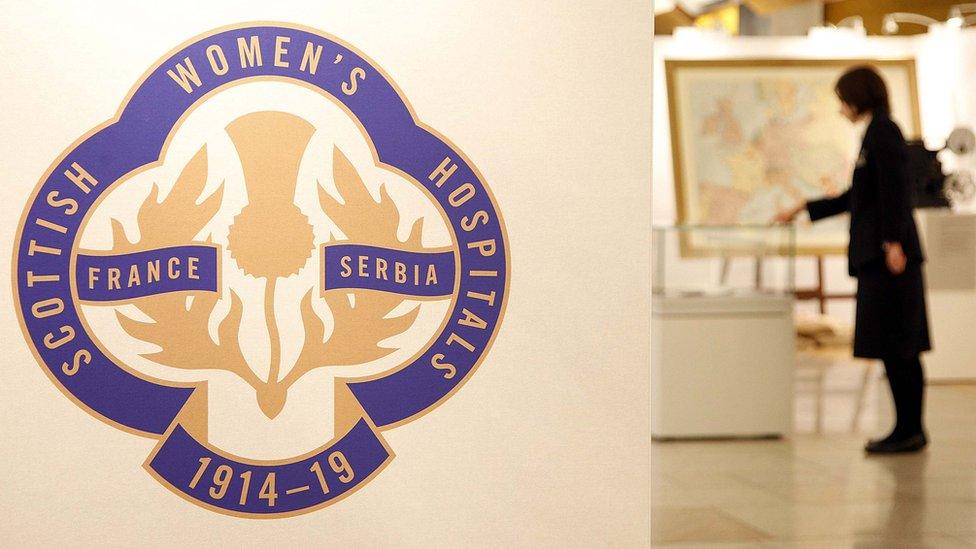
The artist's wife, Helen, said: "John was moved to produce a body of work in celebration of those remarkable women.
"An echo of what he knew a whole generation of doomed young men would have felt for the care and comfort they had been given by those nurses at the lowest point of their lives.
"Even then, they had been given hope and they had been given the understanding that they mattered."
Scottish Parliament presiding officer Tricia Marwick said: "The work of the Scottish Women's Hospitals is truly inspirational. These women were true pioneers and broke down barriers in order to undertake life-saving work during the First World War.
"I am pleased that the work of these women will be recognised at the Scottish Parliament. The iconic work of John Bellany, one of Scotland's most loved artists, will be instrumental in bringing the subject to life and will ensure that this part of our history gets the recognition it deserves."
- Published19 January 2016
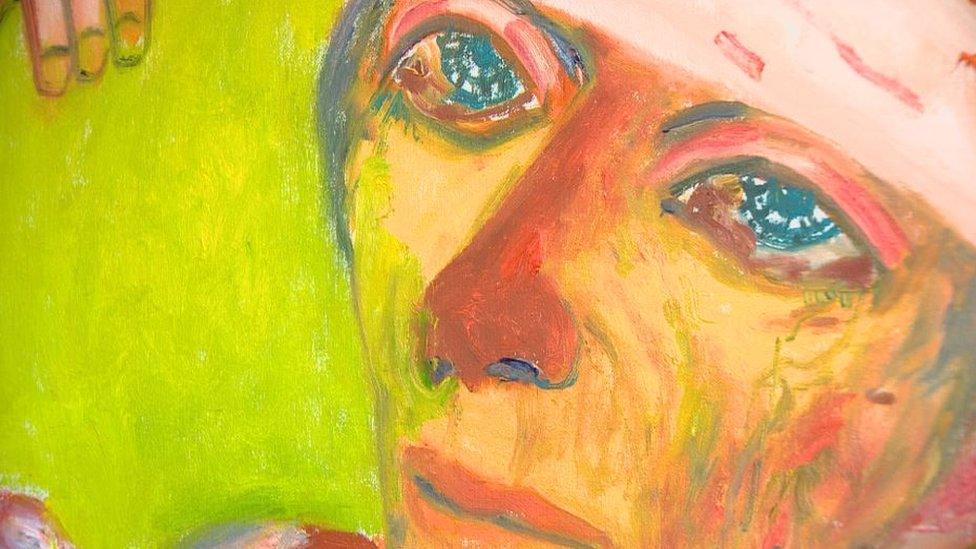
- Published8 December 2015
